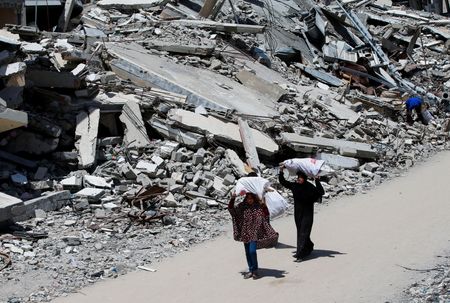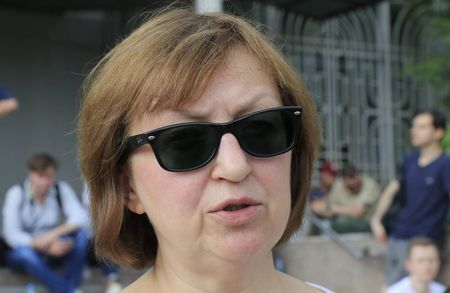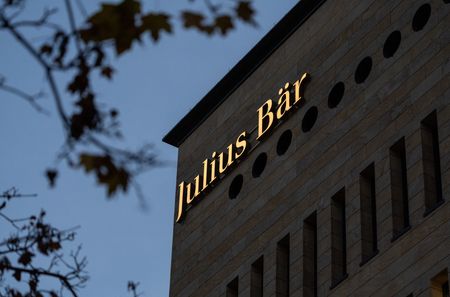By Michelle Nichols
UNITED NATIONS (Reuters) -A U.S.-backed organization aims to start work in the Gaza Strip by the end of May overseeing a new model of aid distribution in the Palestinian enclave, but the United Nations says the plan is not impartial or neutral, and it won’t be involved.
WHAT IS THE GAZA HUMANITARIAN FOUNDATION?
Aid deliveries in Gaza will be overseen by the U.S.-backed Gaza Humanitarian Foundation, which was established in February in Switzerland, according to the Geneva commercial registry.
The foundation intends to work with private U.S. security and logistics firms – UG Solutions and Safe Reach Solutions – according to a source familiar with the plan. A second source familiar with the plan said the GHF has already received more than $100 million in commitments. It was not immediately clear where the money was coming from.
Senior U.S. officials were working with Israel to enable the GHF to start work, acting U.S. Ambassador to the U.N. Dorothy Shea told the Security Council earlier this month, urging the U.N. and aid groups to cooperate. Israel has said it will allow the foundation’s work without being involved in aid deliveries.
HOW WOULD THE NEW PLAN WORK?
According to a GHF document circulating among the aid community earlier this month, the foundation would initially operate from four “secure distribution sites” that could each serve 300,000 people with food, water and hygiene kits. Israeli officials have said those hubs would be in Gaza’s south.
The private U.S. companies would transport the aid into Gaza to the hubs where it would be then distributed by aid groups – not the private companies, the first source said. Israel’s U.N. Ambassador Danny Danon has said a few aid groups have agreed to work with the GHF. The names of those groups are not yet known.
Israel has agreed to expand the number of distribution sites and find ways for aid to get to civilians who are unable to reach a distribution site, the foundation has said.
The foundation has asked Israel’s military to identify “locations in northern Gaza capable of hosting GHF operated secure distribution sites that can be made operational within 30 days.” GHF has also said it would not share any personally identifiable information of aid recipients with Israel.
WHY WON’T THE U.N. WORK WITH THE NEW DISTRIBUTION MODEL?
The United Nations says the U.S.-backed distribution plan does not meet its long-held principles of impartiality, neutrality and independence. U.N. aid chief Tom Fletcher has said time should not be wasted on the alternative proposal.
In a briefing to the Security Council, he explained what was wrong with the Israel-initiated plan: “It forces further displacement. It exposes thousands of people to harm … It restricts aid to only one part of Gaza, while leaving other dire needs unmet. It makes aid conditional on political and military aims. It makes starvation a bargaining chip.”
WHY HAS AN ALTERNATIVE AID DISTRIBUTION PLAN BEEN PROPOSED?
Israel stopped all aid deliveries to Gaza on March 2 after accusing Hamas of stealing aid, which the Palestinian militants deny, and demanding the release of all remaining hostages taken during an October 2023 attack on Israel that killed 1,200 people, according to Israeli tallies. That assault triggered the war, which Gaza authorities say has killed 53,000 people.
In early April, Israel proposed what it described as “a structured monitoring and aid entry mechanism” for Gaza. It was swiftly rejected by U.N. Secretary-General Antonio Guterres, who said it risked “further controlling and callously limiting aid down to the last calorie and grain of flour.”
Since then pressure had been growing on Israel to allow aid deliveries to resume. A global hunger monitor last week warned that half a million people face starvation – about a quarter of the population in the enclave – and U.S. President Donald Trump acknowledged that “a lot of people are starving in Gaza.”
Amid the stalemate over Israel’s plan, Washington backed the newly-created GHF to oversee aid distribution. The GHF then announced last week that it aims to start work in Gaza by the end of May.
In the meantime, Israel has allowed limited aid deliveries to resume under the existing distribution model – with five trucks entering Gaza on Monday, which Fletcher described as “a drop in the ocean.” The U.N. said on Tuesday it has received Israeli approval for about 100 more aid trucks to enter Gaza.
WHAT WAS THE EXISTING AID DELIVERY PLAN?
Throughout the conflict, the United Nations has described its humanitarian operation in Gaza as opportunistic – facing problems with Israel’s military operation, access restrictions by Israel into and throughout Gaza and looting by armed gangs.
But the U.N. has said its aid distribution system works and that was particularly proven during a two-month ceasefire, which was abandoned by Israel in mid-March. Israel would first inspect and approve aid. It was then dropped off on the Gaza side of the border, where it was picked up by the U.N. and distributed.
“We can go back to that system. We have wheels that turn. We do not need to reinvent yet another wheel,” U.N. spokesperson Stephane Dujarric said on Monday. “We don’t need a newly minted humanitarian partner to tell us how to do our work in Gaza.”
Fletcher on Monday listed what the U.N. needs from Israel to scale up aid: at least two open crossings into Gaza – one in the north and one in the south; simplified, expedited procedures; no quotas; no access impediments in Gaza and no attacks when aid is being delivered; and being allowed to meet a range of needs, including food, water, hygiene, shelter, health, fuel and gas.
(Reporting by Michelle NicholsEditing by Alexandra Hudson)









